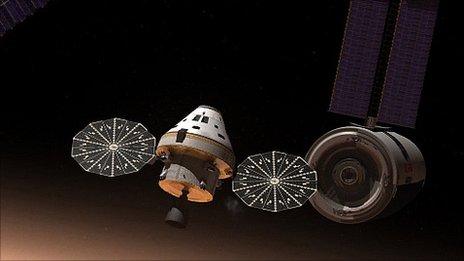Europe ponders future of ATV space truck
- Published
- comments

ATV: A huge investment of money, time and effort - but where next?
A major decision needs to be taken at the end of this year concerning the future of Europe's space truck - the Automated Transfer Vehicle, external.
The programme is nearing its end and European Space Agency (Esa) member states will gather in Caserta, Italy, in November to decide on a successor project.
For those who don't know their shuttle from their Soyuz too well, the ATV is a huge robotic spacecraft that delivers supplies to the International Space Station.
With a lift-off weight of 20 tonnes, it is Europe's biggest space vessel, and its sophisticated navigation and docking technologies make it one of the most impressive pieces of hardware Esa has ever put in orbit.
But only five ATVs were ever ordered. Two of them completed cargo runs to the ISS in 2008 and 2011. A third is currently in orbit docked to the station; two further craft are in the late stages of fabrication.
Vehicle four (dubbed "Albert Einstein, external") will be despatched to the launch site in August for a lift-off in Spring next year. Vehicle five ("Georges Lemaitre, external") will go up in 2014.
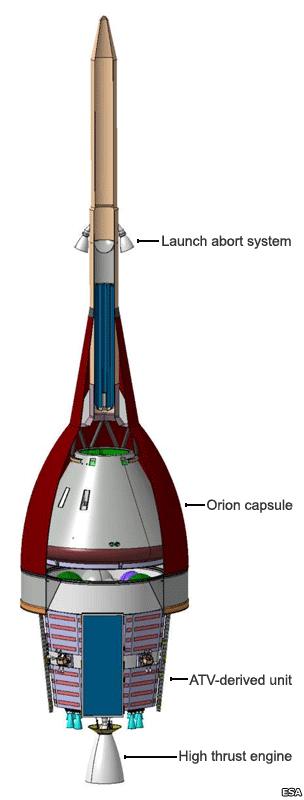
Nasa's preference would be for an ATV-derived service module to shepherd its Orion capsule
The engineers who've been working on the programme will soon need something new to do. The question is "what?"
Esa has just kicked off two studies, valued in total at 13m euros (£10m; $16m), external, which will consider ATV derivatives.
"We have built up knowledge with the ATV on some technologies that are on the leading edge, and it would be quite a pity if we just stopped after all the time and money we have invested these technologies," Nico Dettmann, who runs Esa's ATV programme, told me.
Astrium, Europe's biggest space company and prime contractor on the ATV, will be leading the feasibility work.
In one study, it will look at how the ATV's service module (propulsion and avionics) could be adapted to work with America's forthcoming Orion capsule, external.
This is the ship the US space agency (Nasa) is developing to send astronauts beyond the ISS to destinations such as asteroids and Mars.
Orion will need something to push it through space. The ATV certainly has the oomph (it is used to raise the altitude of the space station) and plenty of intelligence (its navigation technologies find and dock with the ISS unaided by human hands).
Given that Orion is a manned capsule, these systems would no doubt need to be taken to a new standard of assurance and adapted for deep-space operation, but the proposition seems very well suited to ATV's capabilities.
The other study would look at new low-Earth orbit applications for an ATV-derived vehicle. There are lots of ideas knocking around on this one.
Some people envisage tug-like vehicles that push infrastructure around in space, such as modules for future space stations.
Other ideas are based around vehicles that are platforms for robotics. A good example here would be some kind of system that could go to a redundant satellite, grab it and then pull it out of orbit. The trick would be in grappling something that may be uncooperative and tumbling. The ISS in contrast is a rock steady target - albeit moving at 27,000km/h.
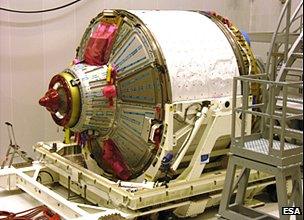
The cargo carrier module could be replaced with other applications
"You can sub-structure the ATV into the service module, which is the part of the vehicle that includes the propulsion and avionics, and does all the flying aspects of a mission," explained Mike Menking, Astrium's head of orbital systems and space exploration.
"Then you have the application part, which is at present an integrated cargo carrier, a pressurised module. So, theoretically, if you cut an ATV in half, you can say the part that is related to the service module is the baseline, and then you add different things depending on the mission."
"I should say that we, Astrium, do not have any preference at the moment. We will be providing information with a cost estimation so that a decision can be made at the ministerial council. And it doesn't necessarily mean it will be black and white, this or that - it could be a combination of both."
The complicating factor in all this future thinking is the subscription Europe must pay to be part of the space station "club".
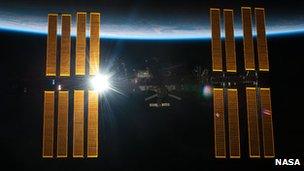
The ISS structure is so big it will take more than an ATV to bring it out of the sky
On the ISS, none of the partners exchange cash; they do jobs in kind. Europe's ATV missions, hauling tonnes of supplies, have been the way it pays its dues. When the freighters are no more, it will need a new way to contribute to the so called common system operating costs (CSOC).
It means that if the ATV-derived system is to meet any part of the CSOC, its function will have to satisfy the Americans, who are the chief station partner. And Nasa has expressed a preference; it would like to see the Orion service module option being pursued.
Orion may sit outside the ISS project, but the Americans say they would consider such a development an acceptable barter.
Europe has its own needs and desires, of course, and we'll get a clearer idea of where the thinking lies in November.
A while back, it looked like an additional ATV might be ordered just to de-orbit the space station when it reached the end of its mission, sometime in the 2020s.
The latest analysis, however, suggests even this juggernaut of a spacecraft does not have the propulsive might to bring down a structure the size of a football pitch and weighing 400 tonnes.
Current thinking is leaning towards the idea of having three Russian Progress freighters, external thrusting in unison. But that's quite a way off, yet.
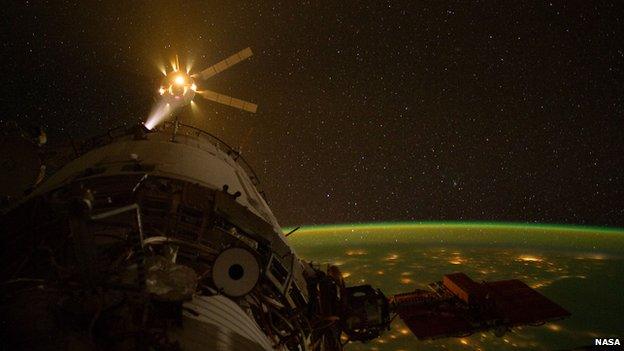
An illuminated ATV comes up on the rear of the space station for a docking
- Published23 March 2012
- Published8 November 2011

- Published20 September 2011
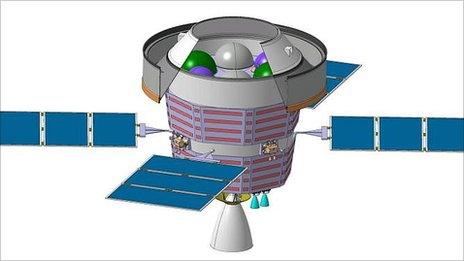
- Published14 September 2011
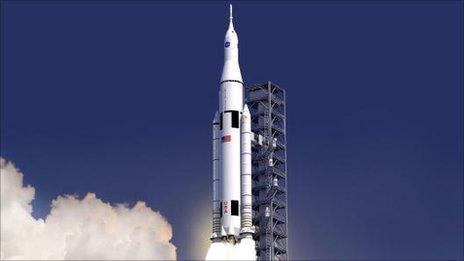
- Published25 May 2011
